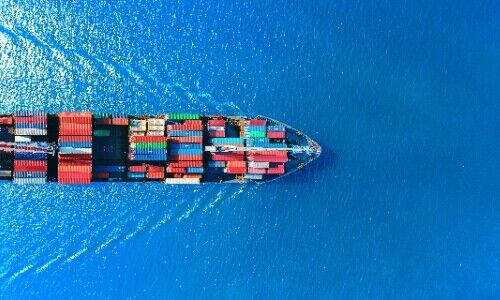US-China Trade in the Shadow of Trump 2.0
The two countries are the de facto global economy, given the value of their imports and exports far outpace the rest of the world. How much can the incoming US administration actually do?
This Christmas and New Year will be full of invoicing for commercial bankers in Asia as US President-elect Donald Trump makes veiled threats about the tariffs he intends to impose.
But in the short term, China is already feeling, how should we say it, the benefit?
Leave the Change
As the «South China Morning Post» indicated earlier this month, it is high season for front-loading, and export growth on the mainland hit a 27-month high in October as companies front-loaded goods in anticipation of a much darker 2025 trade picture.
As a graphic released Wednesday by Visual Capitalist shows, the key question is who will cause the most damage to whom.
The Import Picture
The US is by far the world’s largest importer, taking in $3.17 trillion in goods in 2023, according to World Trade Organization statistics, followed by China at $2.56 trillion.
Germany follows in a very distant third place with $1.46 trillion, with the Netherlands in an even more distant fourth ($842 billion). Hong Kong, however, posts a surprisingly strong showing by placing ninth ($654 billion) on the list, although much of that is simply its role as a mainland proxy, as there clearly aren’t 1 trillion worth of goods flowing into a city of 7.5 million people annually.
The Export Picture
The export side looks much the same, although the roles are reversed, with China leading the world by exporting $3.38 trillion in goods annually (14.2 percent global market share) followed by the US with $2.02 trillion.
On this side of the trade ledger, Germany is close on the heels of the US in a very strong third place with $1.68 trillion in exports followed by the Netherlands and Japan. Hong Kong is again a surprising tenth, likely again a proxy, by exporting slightly more than half a trillion worth of goods.
Tariffs Hurt Who?
Looking at the above, the world’s global economy is now largely about the US-China trade relationship and it is important to note that tariffs are likely to hit America’s imports the most given that China appears far more prepared for what is coming than it was in 2016.
As finews.asia reported Wednesday: «In Asia, China will bear the brunt of board-based discriminatory tariffs,» Min Lan Tan, head chief investment office APAC at UBS Global Wealth Management indicated in a statement. «Still, compared to Trump 1.0, the region is now more equipped to manage these challenges.»
The «New York Times» backs that up, indicating in a piece on Wednesday that the mainland has a new playbook, called «supply chain warfare» to fight Trump with this time around.
Rationing Batteries
They examine the case of a US drone maker, Skydio, falling victim to Chinese sanctions, which forced it to subsequently ration the supplies of batteries to customers.
Given that, it increasingly looks like China will hit back with countermeasures of its own if Trump imposes sanctions and tariffs in the way he is indicating, Conversely, imposing those same measures are likely to prompt renewed inflation in the US, and not much else.
What Comes Around
During Trump 1.0, the mainland was generally slow to react and the measures they imposed were seen as mostly superficial, the newspaper indicated, citing trade experts.
Right, now, all this bears a similar pattern to what happened almost exactly a century ago during the Great Depression, when worldwide trade collapsed after the US Smooth-Hawley Tariff Act in 1930 raised average tariffs by 20 percent, prompting similar countermeasures abroad and precipitating the failure of banks worldwide.
Hoover 2.0
Although it is too early to say what the effects of a new round of sanctions and tariffs on world trade are, the danger right now is that Trump's second time around may eventually end up looking more like Hoover 2.0 than anything else.
In the meantime, the daily workload of the average commercial banker in Asia is going to feature a great deal of last-minute factoring and discounting before the end of January rolls around.



























